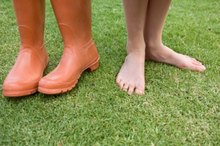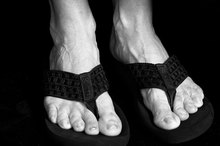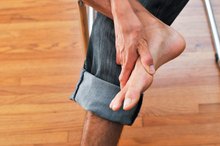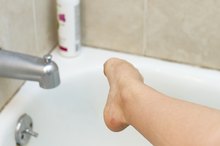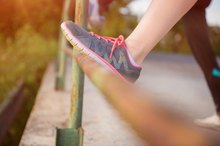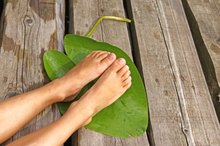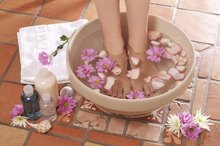What does fact checked mean?
At Healthfully, we strive to deliver objective content that is accurate and up-to-date. Our team periodically reviews articles in order to ensure content quality. The sources cited below consist of evidence from peer-reviewed journals, prominent medical organizations, academic associations, and government data.
The information contained on this site is for informational purposes only, and should not be used as a substitute for the advice of a professional health care provider. Please check with the appropriate physician regarding health questions and concerns. Although we strive to deliver accurate and up-to-date information, no guarantee to that effect is made.
How to Remove Soft Corns Between My Toes
Corns aren't a serious or life-threatening medical condition, but they can be painful and irritating. They happen when skin builds up over a place of increased friction, according to the Connecticut Surgical Group, like where two toes rub together. Some corns are hard and leathery, while others appear soft and moist. The methods you use to treat your corn are the same for both types. Over-the-counter remedies are all most people need, but stubborn corns may require attention from a doctor or dermatologist.
Wash your foot with soap and mild water. Use a washcloth or pumice stone to rub away to soft top layer of skin on your corn, if any suck skin is present. Dry your feet with a clean towel.
How to Remove Foot Corns Naturally
Learn More
Apply the corn pad to dry skin so your corn rests in the hole in the center. Corn pads cushion the corn so it doesn't rub against the adjacent toe as it heals.
Apply a thin layer of salicylic acid gel over your corn. Some corn pads come pre-medicated with salicylic acid. If this is the case, apply the corn pad according to the package directions.
How Does Corn Removal Work?
Learn More
Repeat the above processes daily until your corn has healed completely. Moisturize your foot skin on a regular basis, recommends MayoClinic.com, to help prevent future corns 2. Wear shoes that don't force your toes together and cause extra rubbing and friction.
Related Articles
References
- Connecticut Surgery Group: Corns and Calluses
- MayoClinic.com: Corns and Calluses
- DeLauro T and DeLauro M (2012) Chapter 98: Corns and Calluses. Fitzpatrick's Dermatology in General Medicine (8th Edition). New York, New York: McGraw-Hill Education. ISBN-13: 978-0071669047.
- American Academy of Dermatology Association. How to treat corns and calluses. 2019.
- Reddy P, Anusha T, Haritha N, Nagendra A, Bhavani D, Gandhimathi R. Case report on non-surgical treatment for foot corn. International Journal of Dermatopathology and Surgery. 2018;4(1).
- American Academy of Dermatology Association. How to Treat Corns and Calluses. 2019.
- DeLauro T and DeLauro M (2012) Chapter 98: Corns and Calluses. Fitzpatrick's Dermatology in General Medicine (8th Edition). New York, New York: McGraw-Hill Education. ISBN-13: 978-0071669047.
Writer Bio
A Jill-of-all-trades, Lillian Downey is a certified Responsible Sexuality Educator, certified clinical phlebotomist and a certified non-profit administrator. She's also written extensively on gardening and cooking. She also authors blogs on nail art blog and women's self esteem.
